Two-Variable q-Hermite-Based Appell Polynomials and Their Applications
Abstract
:1. Introduction
2. Characteristics of -Hermite-Appell Polynomials with Two Variables
3. Applications
| S. No. | q-Hermite- Appell Polynomials | Generating Function | Series Definition |
|---|---|---|---|
| I. | The -Hermite- Bernoulli Polynomials | ||
| II. | The -Hermite- Euler Polynomials | ||
| III. | The -Hermite- Genocchi Polynomials | ||
4. Conclusions
- Generating function (See Equation (31)):The subsequent generating function for q-Hermite polynomials of 3-variables holds true:
- Series definition (See Definition 1):The following series definition for the 2VqHAP holds true:
- Partial differential equation: (See Theorem 1):The following partial differential equation is a solution for the 2VqHAP :under the initial condition
- Operational formulas (See Theorem 2):The subsequent operational definition is satisfied by the 2VqHAP :where is the second and third q-derivative operator.
- -Multiplicative and -derivative operators (See Theorem 3):The q-Hermite-Appell polynomials of two variables are quasi-monomials according to the subsequent q-multiplicative and q-derivative operators:or, equivalentlyor, equivalentlyor, equivalentlyandrespectively.
- -Differential equations (See Theorem 4):For q-Hermite-Appell polynomials of two variables, the following q-differential equations hold:andAs applications, we have taken into consideration such as q-Hermite-Bernoulli polynomials, , q-Hermite-Euler polynomials as well as q-Hermite-Genocchi polynomials in Section 3. Our outcomes will be useful in obtaining novel expression results and their associated hybrid polynomials.
Author Contributions
Funding
Data Availability Statement
Acknowledgments
Conflicts of Interest
References
- Jackson, D.O.; Fukuda, T.; Dunn, O.; Majors, E. On q-definite integrals. Quart. J. Pure Appl. Math. 1910, 41, 193–203. [Google Scholar]
- Eweis, S.Z.H.; Mansour, Z.S.I. Generalized q-Bernoulli Polynomials Generated by Jackson q-Bessel Functions. Results Math. 2022, 77, 132. [Google Scholar] [CrossRef]
- Riyasat, M.; Nahid, T.; Khan, S. q-Tricomi functions and quantum algebra representations. Georgian Math. J. 2021, 5, 793–803. [Google Scholar] [CrossRef]
- Srivastava, H.M.; Jian, C.; Arjika, S. A note on generalized q-difference equations and their applications involving q-hypergeometric functions. Symmetry 2020, 12, 1816. [Google Scholar] [CrossRef]
- Khan, S.; Nahid, T. Determinant forms, difference equations and zeros of the q-Hermite-Appell polynomials. Mathematics 2018, 6, 258. [Google Scholar] [CrossRef]
- Fadel, M.; Raza, N.; Du, W.-S. On q-Hermite polynomials with three variables: Recurrence relations, q-differential equations, summation and operational formulas. Symmetry 2024, 16, 385. [Google Scholar] [CrossRef]
- Srivastava, H.M.; Arjika, S. A general family of q-hypergeometric polynomials and associated generating functions. Mathematics 2021, 9, 1161. [Google Scholar] [CrossRef]
- Raza, N.; Fadel, M.; Nisar, K.S.; Zakarya, M. On 2-variable q-Hermite polynomials. AIMS Math. 2021, 8, 8705–8727. [Google Scholar] [CrossRef]
- Raza, N.; Fadel, M.; Du, W.-S. New summation and integral representations for 2-variable (p,q)-Hermite polynomials. Axioms 2024, 13, 196. [Google Scholar] [CrossRef]
- Cao, J.; Raza, N.; Fadel, M. The 2-variable q-Laguerre polynomials from the context of quasi-monomiality. J. Math. Anal. Appl. 2024, 535, 128126. [Google Scholar] [CrossRef]
- Andrews, G.E.; Askey, R.; Roy, R. Special Functions of Encyclopedia Mathematics and Its Applications; Cambridge University Press: Cambridge, UK, 1999; Volume 71. [Google Scholar] [CrossRef]
- Gasper, G.; Rahman, M. Basic Hypergeometric Series. In Encyclopedia of Mathematics and Its Applications, 2nd ed.; Cambridge University Press: Cambridge, UK, 2004; Volume 96. [Google Scholar] [CrossRef]
- Kac, V.G.; Pokman, C. Quantum Calculus; Springer: New York, NY, USA, 2002; Volume 113. [Google Scholar] [CrossRef]
- Jackson, F.H. On q-functions and a certain difference operator. Earth Environ. Sci. Trans. R. Soc. Edinb. 1909, 46, 253–281. [Google Scholar] [CrossRef]
- Sharma, A.; Chak, A.M. The basic analogue of a class of polynomials. Riv. Mat. Univ. Parma 1954, 5, 325–337. [Google Scholar]
- Al-Salam, W.A. q-Appell polynomials. Ann. Mat. Pura Appl. 1967, 77, 31–45. [Google Scholar] [CrossRef]
- Srivastava, H.M. Some characterizations of Appell and q-Appell polynomials. Ann. Mat. Pura Appl. 1982, 130, 321–329. [Google Scholar] [CrossRef]
- Srivastava, H.M. Some generalizations and basic (or q-) extensions of the Bernoulli, Euler and Genocchi polynomials. Appl. Math. Inf. Sci. 2011, 5, 390–444. [Google Scholar]
- Ernst, T. q-Bernoulli and q-Euler polynomials, an umbral approach. Int. J. Differ. Equ. 2006, 1, 31–80. [Google Scholar]
- Al-Salam, W.A. q-Bernoulli numbers and polynomials. Math. Nachr. 1958, 17, 239–260. [Google Scholar] [CrossRef]
- Mahmudov, N.I.; Momenzadeh, M. On a class of q-Bernoulli, q-Euler, and q-Genocchi polynomials. Abstr. Appl. Anal. 2014, 2014, 696454. [Google Scholar] [CrossRef]
- Araci, S.; Acikgoz, M.; Jolany, H.; He, Y. Identities involving q-Genocchi numbers and polynomials. Notes Number Theory Discret. Math. 2014, 20, 64–74. [Google Scholar]
- Babusci, D.; Dattoli, G.; Licciardi, S.; Sabia, E. Mathematical Methods for Physicists; World Scientific Publishing Co., Pte. Ltd.: Hackensack, NJ, USA, 2020. [Google Scholar] [CrossRef]
- Cesarano, C. Hermite polynomials and some generalizations on the heat equations. Int. J. Sys. Appl. Eng. Dev. 2014, 8, 193–197. [Google Scholar] [CrossRef]
- Chebyshev, P.L. Sur le développement des fonctions à une seule variable. Bull. Acad. Sci. St. Petersburg 1859, 1, 193–200. [Google Scholar]
- Dattoli, G.; Chiccoli, C.; Lorenzutta, S.; Maino, G.; Torre, A. Theory of generalized Hermite polynomials. Comput. Math. Appl. 1994, 28, 71–83. [Google Scholar] [CrossRef]
- Dattoli, G. Generalized polynomials, operational identities and their applications. J. Comput. Appl. Math. 2000, 118, 111–123. [Google Scholar] [CrossRef]
- Dattoli, G.; Chiccoli, C.; Lorenzutta, S.; Maino, G.; Torre, A. Generalized Bessel functions and generalized Hermite polynomials. J. Math. Anal. Appl. 1993, 178, 509–516. [Google Scholar] [CrossRef]
- Dattoli, G.; Garra, R.; Licciardi, S. Hermite, Higher order Hermite, Laguerre type polynomials and Burgers like equations. J. Comput. Appl. Math. 2024, 445, 115821. [Google Scholar] [CrossRef]
- Hermite, C. Sur un nouveau développement en série des fonctions. C. R. Acad. Sci. 1864, 58, 93–100. [Google Scholar]
- Hermite, C. Sur un Nouveau Développement en série des Fonctions. Euvres 1865, 2, 293–308. [Google Scholar]
- Institut Impérial de France. Classe des sciences mathématiques et physiques Mémoires de la classe des Sciences Mathématiques et Physiques de l’Institut Impérial de France. Didot 1811, 11. [Google Scholar]
- Rao, N.; Yadav, A.K.; Mursaleen, M.; Sinha, B.K.; Jha, N.K. Szász-Beta operators via Hermite polynomial. J. King Saud Univ. Sci. 2024, 36, 103120. [Google Scholar] [CrossRef]
- Appell, P.; Kampé de Fériet, J. Fonctions Hypergéometriques et Hyperspheriques: Polynómes d’ Hermite; Gauthier-Villars: Paris, France, 1926. [Google Scholar]
- Widder, D.V. The Heat Equation; Academic Press: Cambridge, MA, USA, 1976; Volume 67. [Google Scholar]
- Berg, C.; Ismail, M.E.H. q-Hermite polynomials and classical orthogonal polynomials. Can. J. Math. 1996, 48, 43–63. [Google Scholar] [CrossRef]
- Iqbal, A.; Khan, W.A. Some properties of q-Hermite-Fubini numbers and polynomials. Soft Comput. Theor. Appl. Proc. SoCTA 2022, 425, 917–931. [Google Scholar]
- Ismail, M.E.H.; Stanton, D.; Viennot, G. The combinatorics of q-Hermite polynomials and the Askey-Wilson integral. Eur. J. Combin. 1987, 8, 379–392. [Google Scholar] [CrossRef]
- Kang, J.Y.; Khan, W.A. A new class of q-Hermite-based Apostol type Frobenius Genocchi polynomials. Commun. Korean Math. Soc. 2020, 35, 759–771. [Google Scholar] [CrossRef]
- Ryoo, C.-S.; Kang, J.-Y. Some Identities Involving Degenerate q-Hermite Polynomials Arising from Differential Equations and Distribution of Their Zeros. Symmetry 2022, 14, 706. [Google Scholar] [CrossRef]
- Szabłowski, P.J. On the q-Hermite polynomials and their relationship with some other families of orthogonal polynomials. Demonstr. Math. 2013, 46, 679–708. [Google Scholar] [CrossRef]
- Steffensen, J.F. The poweroid, an extension of the mathematical notion of power. Acta Math. 1941, 73, 333–366. [Google Scholar] [CrossRef]
- Dattoli, G. Hermite-Bessel and Laguerre-Bessel functions: A by-product of the monomiality principle. In Proceedings of the Workshop on Advanced Special Functions and Applications, Melfi, Italy, 9–12 May 1999; Aracne: Rome, Italy, 2000; Volume 1, pp. 147–164. [Google Scholar]
- Dattoli, G.; Licciardi, S. Monomiality and a new family of Hermite polynomials. Symmetry 2023, 15, 1254. [Google Scholar] [CrossRef]
- Khan, S.; Yasmin, G.; Khan, R.; Hassan, N.A.M. Hermite-based Appell polynomials: Properties and applications. J. Math. Anal. Appl. 2009, 351, 756–764. [Google Scholar] [CrossRef]
- Khan, S.; Raza, N. Monomiality principle, operational methods and family of Laguerre-Sheffer polynomials. J. Math. Anal. Appl. 2012, 387, 90–102. [Google Scholar] [CrossRef]
- Raza, N.; Fadel, M.; Khan, S.; Cesarano, C. Monomiality principle for q-polynomials: Introduction and Applications. Math. Mech. Complex Syst. 2024, in press. [Google Scholar]
- Florenini, R.; Vinet, L. Quantum algebras and q-special functions. Ann. Phys. 1993, 221, 53–70. [Google Scholar] [CrossRef]
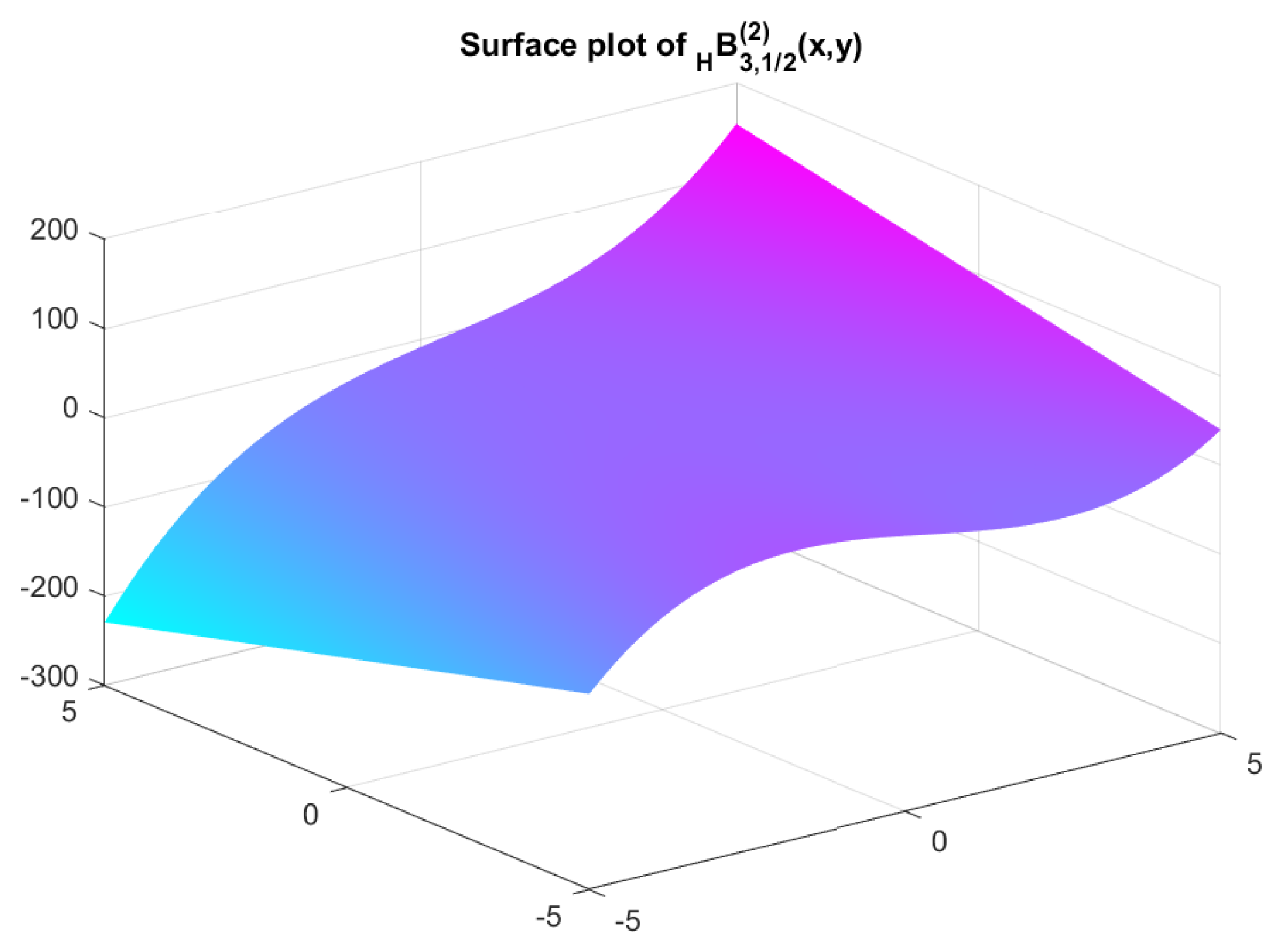
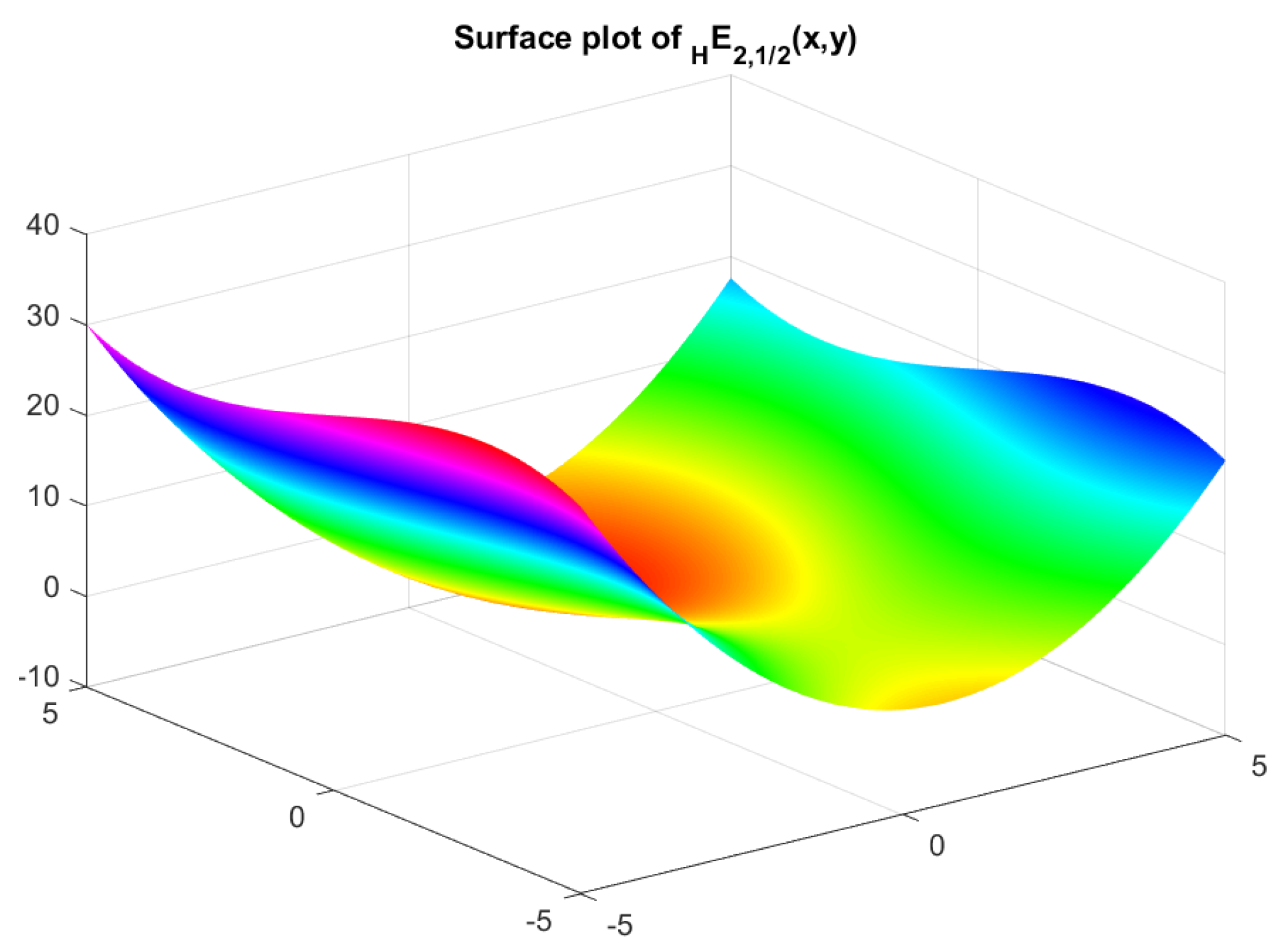

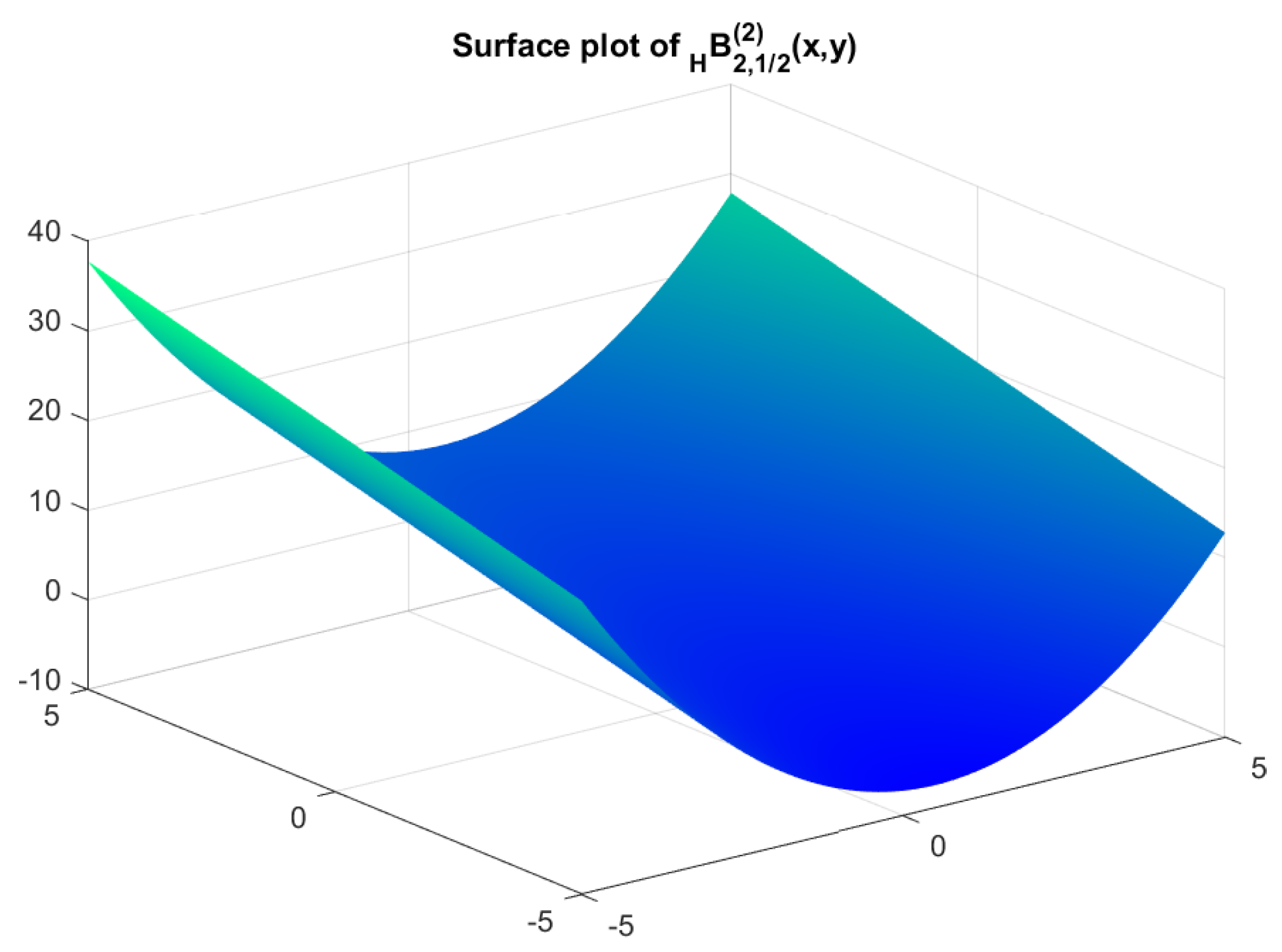
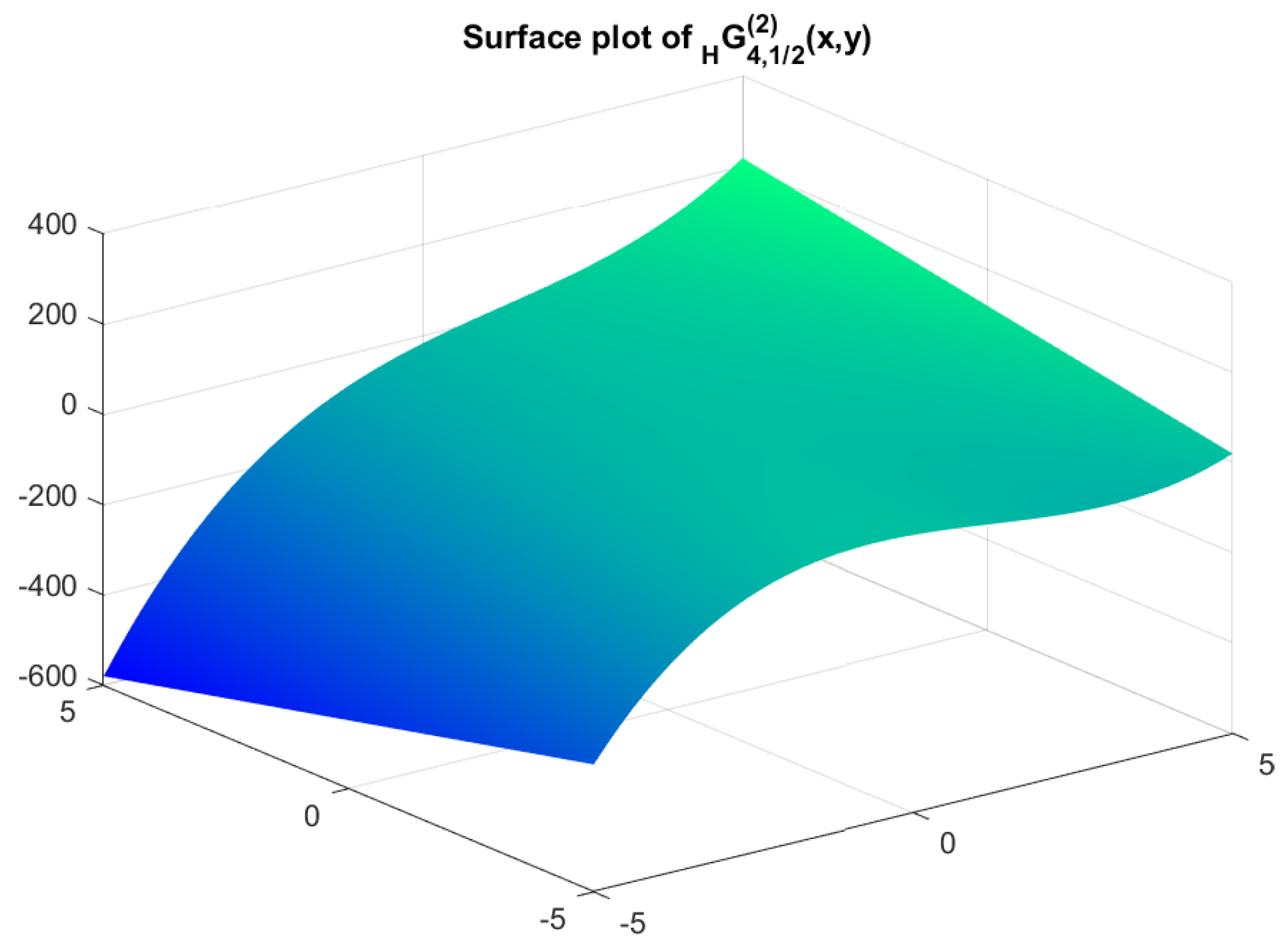
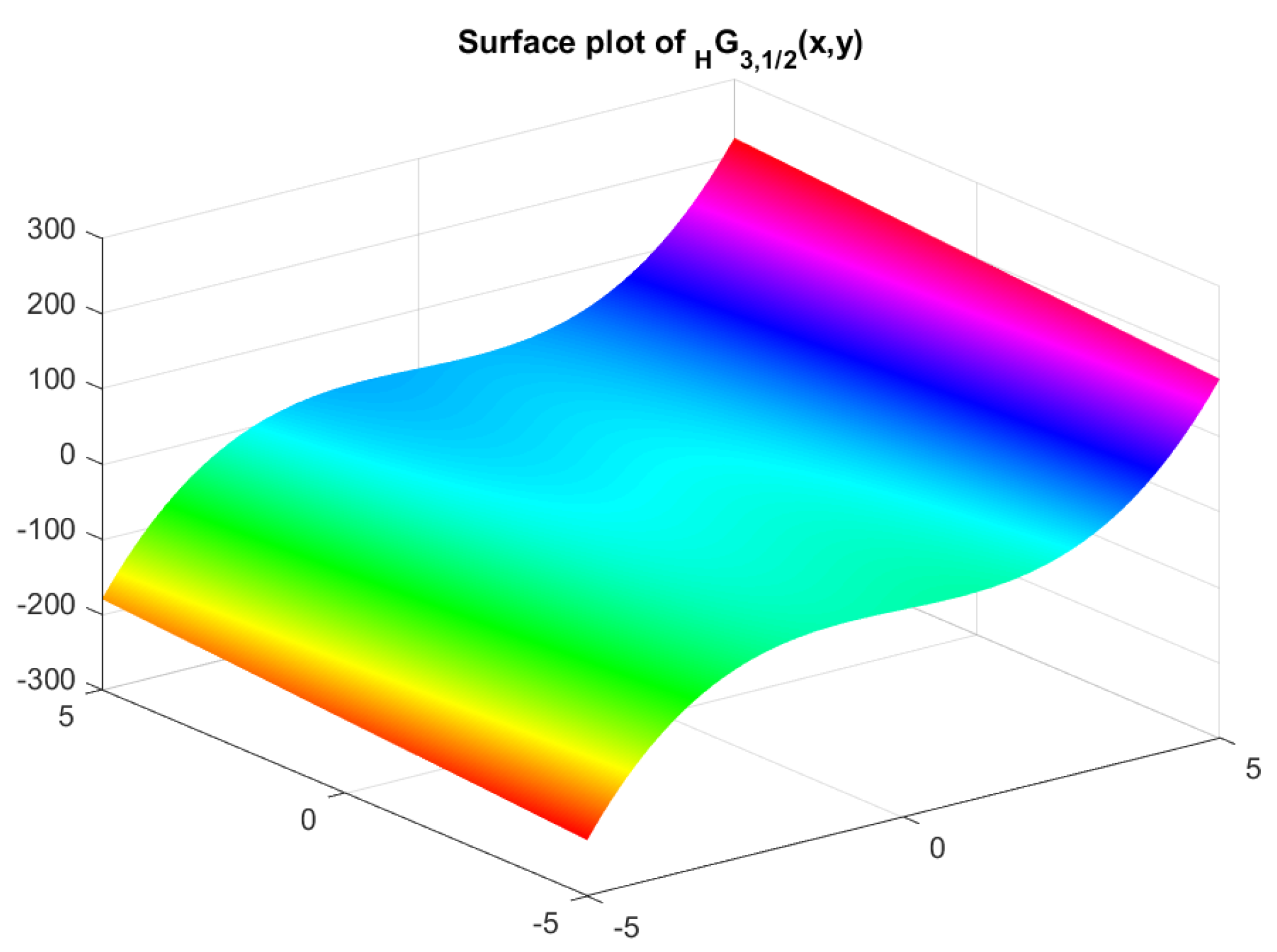
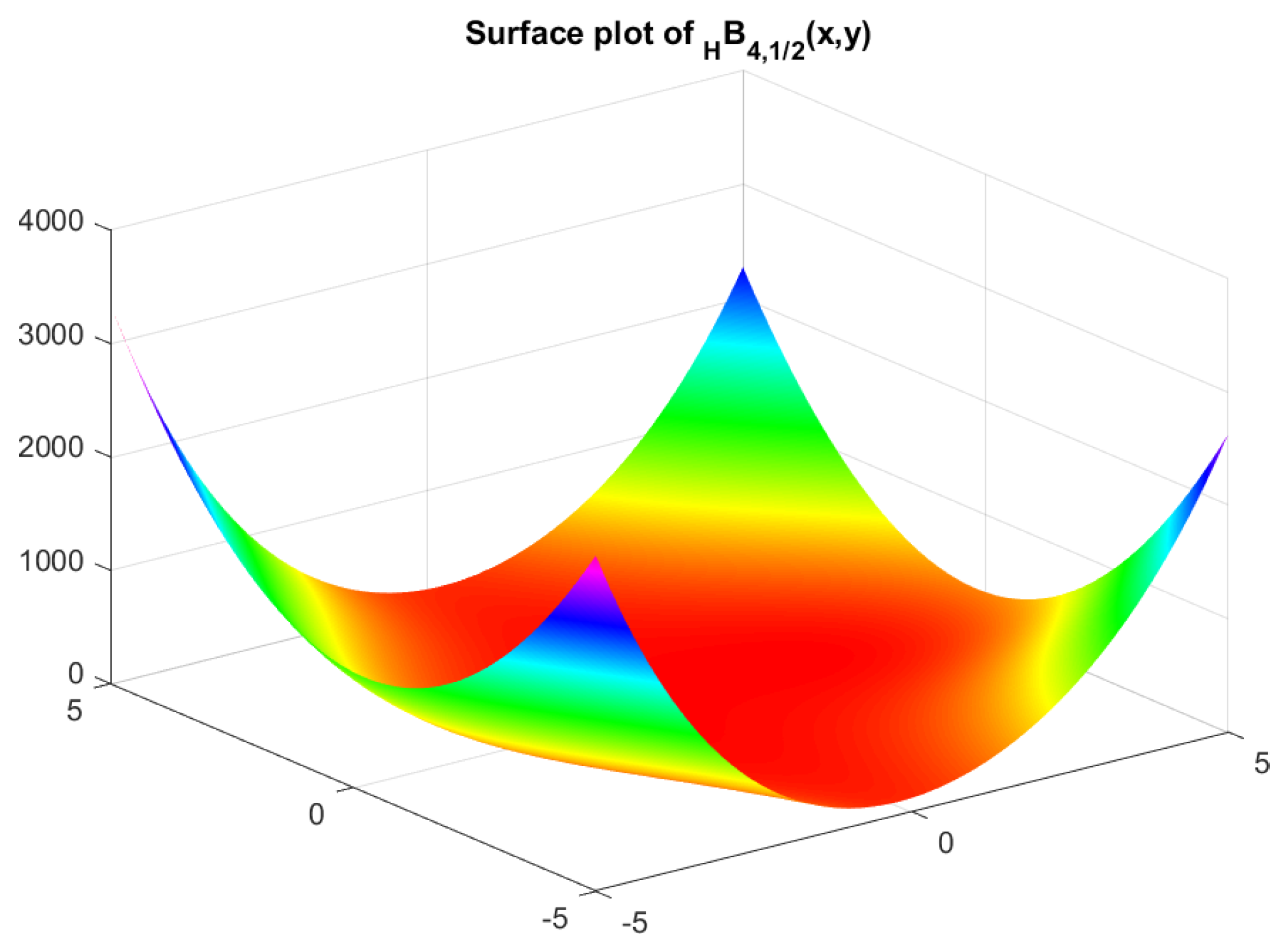

| S. No. | q-Appell Polynomials | Generating Function | |
|---|---|---|---|
| I. | The q-Bernoulli Polynomials [19,20] | ||
| II. | The q-Euler Polynomials [19,21] | ||
| III. | The q-Genocchi Polynomials [21,22] |
| n | 2 | 3 | 4 |
|---|---|---|---|
Disclaimer/Publisher’s Note: The statements, opinions and data contained in all publications are solely those of the individual author(s) and contributor(s) and not of MDPI and/or the editor(s). MDPI and/or the editor(s) disclaim responsibility for any injury to people or property resulting from any ideas, methods, instructions or products referred to in the content. |
© 2024 by the authors. Licensee MDPI, Basel, Switzerland. This article is an open access article distributed under the terms and conditions of the Creative Commons Attribution (CC BY) license (https://creativecommons.org/licenses/by/4.0/).
Share and Cite
Fadel, M.; Alatawi, M.S.; Khan, W.A. Two-Variable q-Hermite-Based Appell Polynomials and Their Applications. Mathematics 2024, 12, 1358. https://doi.org/10.3390/math12091358
Fadel M, Alatawi MS, Khan WA. Two-Variable q-Hermite-Based Appell Polynomials and Their Applications. Mathematics. 2024; 12(9):1358. https://doi.org/10.3390/math12091358
Chicago/Turabian StyleFadel, Mohammed, Maryam Salem Alatawi, and Waseem Ahmad Khan. 2024. "Two-Variable q-Hermite-Based Appell Polynomials and Their Applications" Mathematics 12, no. 9: 1358. https://doi.org/10.3390/math12091358
APA StyleFadel, M., Alatawi, M. S., & Khan, W. A. (2024). Two-Variable q-Hermite-Based Appell Polynomials and Their Applications. Mathematics, 12(9), 1358. https://doi.org/10.3390/math12091358






